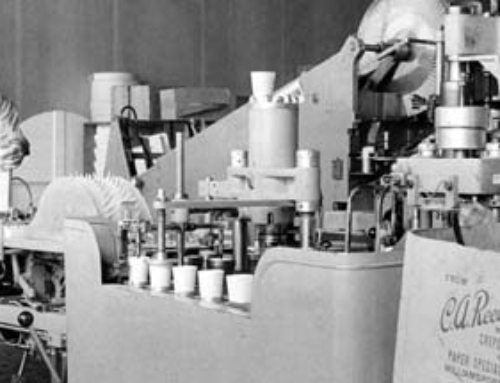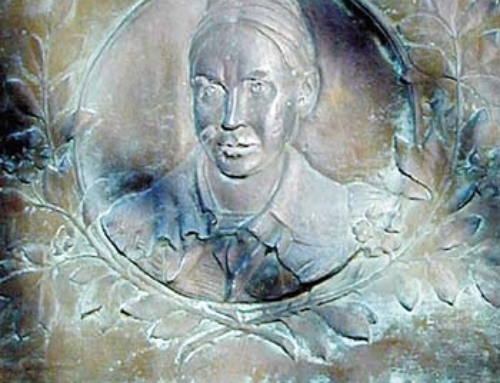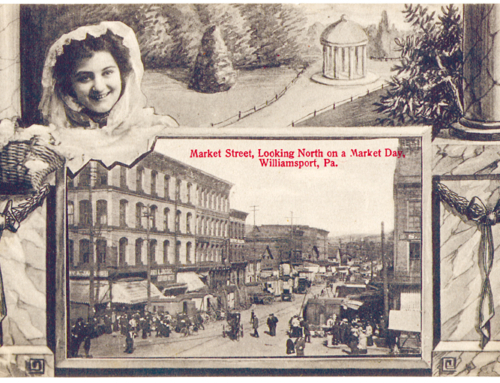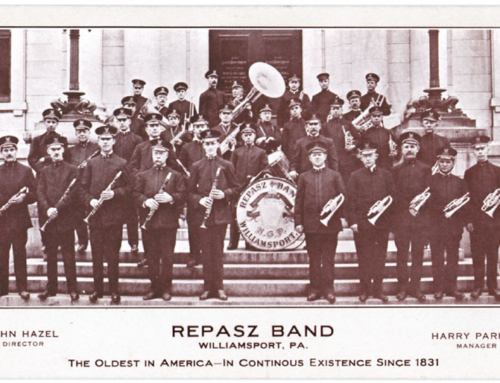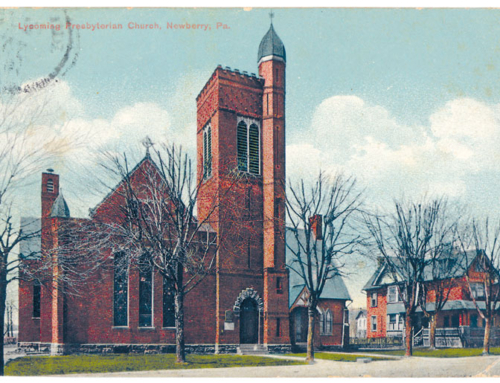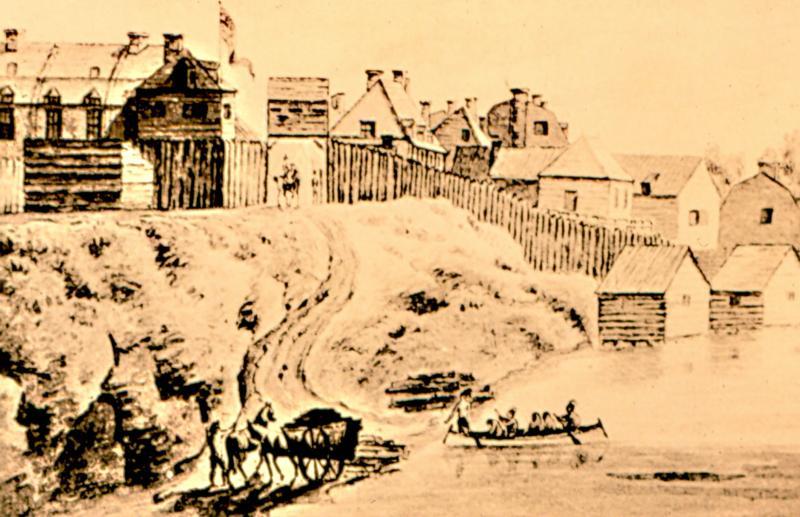
The Revolutionary War era was a bloody and trying one for the early settlers of Lycoming County. One of the most important men of this period was Samuel Wallis, regarded as a hero by many, but also an anti-hero. Wallis was one of early Lycoming County’s largest landholder, owning thousands of acres of land including some of the land that would later become the city of Williamsport.
He owned about 7,000 acres in the Muncy area, anchored by his solidly built stone mansion built on high ground near the mouth of Carpenter’s Run. This fine homestead of Wallis played a key role in the summer 1778 in the episode known as “The Big Runaway.”
A captured Indian reported that it was the intention of the Indians to kill every settler along both branches of the Susquehanna River. This report started a large panic that became known as “The Big Runaway,” as settlers fled to points they regarded as strong points. People living above Lycoming Creek fled to Antes Fort. People living near Muncy sought shelter at Captain John Brady’s and those living between Muncy and Lycoming Creek sought refuge at the Wallis homestead.
Wallis’ home was one of the few structures in the Susquehanna Valley to escape destruction at Indian hands. Historians have speculated that was because the home was strongly built of stone, but other historians have darker explanations.
Noted historian Carl Van Doren speculates in his 1941 book, “The Secret History of the American Revolution,” that Wallis may have been in league with the British, who were whipping up the Indians against the settlers to open up a second front against the American Revolutionary insurgents.
Van Doren writes that Wallis acted as in intermediary between British Gen. Henry Clinton and Benedict Arnold in Arnold’s treasonous plot to turn over West Point to the British.
Van Doren wrote in part, “There can be no doubt that Wallis was Arnold’s agent and sent secret intelligence to the British….”
Another historian, John Bakeless, casts Wallis in a suspicious light. In his 1959 book, “Turncoats, Traitors and Heroes,” Bakeless wrote, “Early in the war, Wallis had in some unknown way been extremely useful to British Commander-in Chief General William Howe…” Bakeless claims that Wallis had spied on the troop movements of American Gen. John Sullivan to relieve settlers in New York’s southern tier and Pennsylvania’s northern tier from threats from British troops and their Indian allies.
Wallis was going to have a friend volunteer for the Sullivan Expedition and send secret reports back to Wallis so he could pass them along to Maj. John Andre, who could then pass them along to Gen. Clinton. This plot never materialized, however Wallis was alleged to have to try one other way to undermine the Sullivan Expedition. Wallis was noted for his knowledge of “Indian country” and was requested to make a map indicating Indian strong points. He was supposed to have prepared a falsified map for Sullivan. Fortunately, Sullivan never used the map. No copy of the allegedly false Wallis map has turned up in the historical papers or files of the Revolutionary era.
Bakeless also alleges that Wallis may have been involved with Mohawk chief Joseph Brant in efforts to foment trouble among the Mohawks against the American pioneer settlers. Thankfully, nothing ever came of this.
Despite all of these alleged machinations with the British, Wallis was appointed Captain of the Sixth Company, 2nd Battalion of the Northumberland County Associated Militia. He was also elected as Northumberland County’s representative to the Pennsylvania Assembly in 1776.
After the war when Lycoming County was created, Gov. Thomas Mifflin selected Wallis one of the first four associate judges of the county judiciary.
Wallis continued his large-scale land speculations after the war but they would eventually lead to financial ruin for him. One of his partners in these speculations was James Wilson, a signer of the Declaration of Independence and one of the framers of the Constitution and was one of the original Justices of the U.S. Supreme Court. When Wilson died, he died owing Wallis more than 88,000 pounds sterling, a staggering sum for the time. This caused serious financial problems for Wallis. But death from smallpox on Oct. 14, 1798, relieved Wallis of these burdens.
Wallis seems to have a dual quality that of a great achiever and that of an infamous schemer although he showed compassion in granting refuge and comfort to those seeking safety from the “Big Runaway.” He was a man of vision and was one of those people who helped make Lycoming County and its environs an area of pride and productivity. His underside is harder to define and harder to judge. But suffice it to say that Samuel Wallis is one of the more interesting and important figures of early Lycoming County.
By Lou Hunsinger Jr., Williamsport Sun-Gazette


